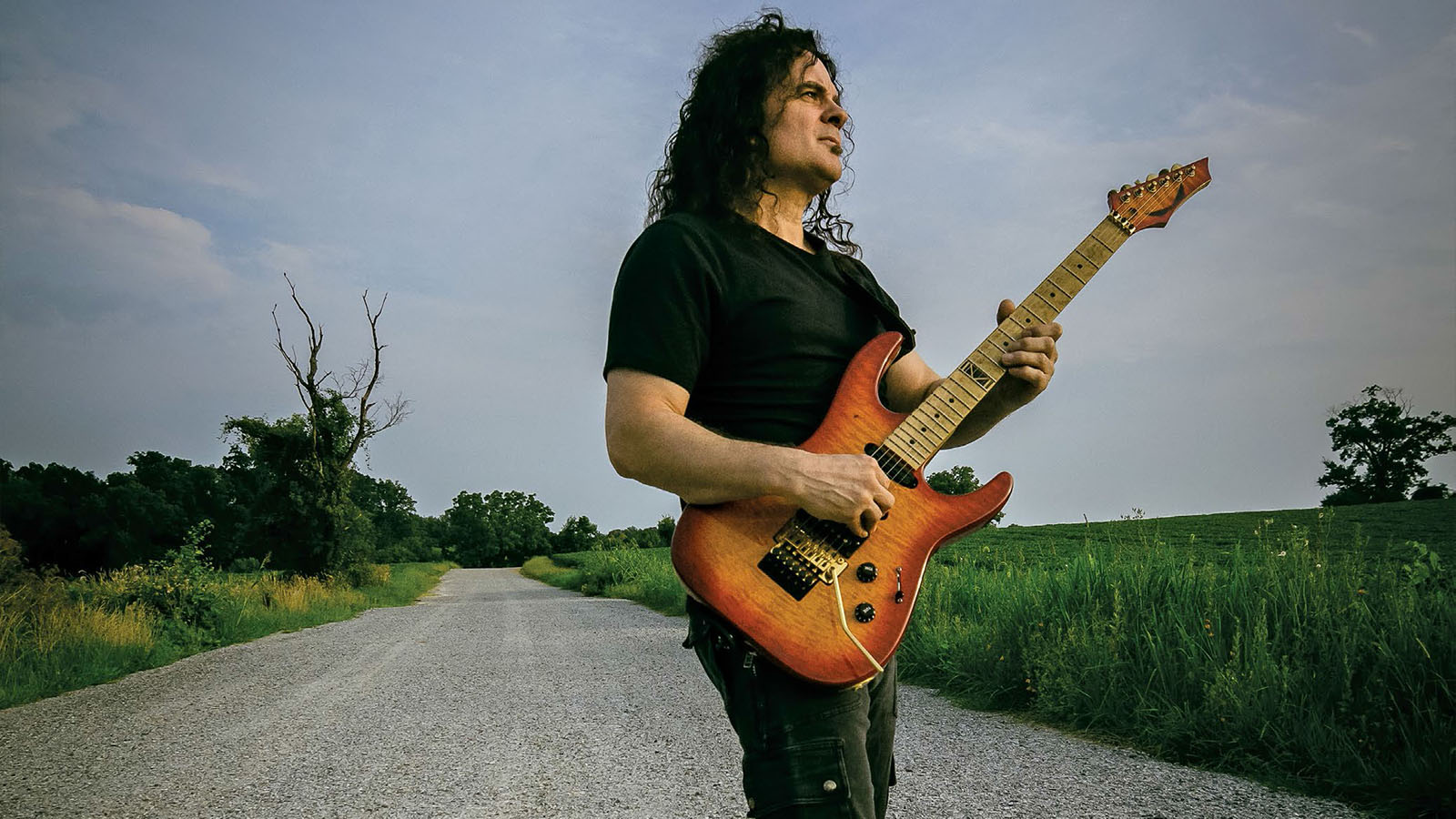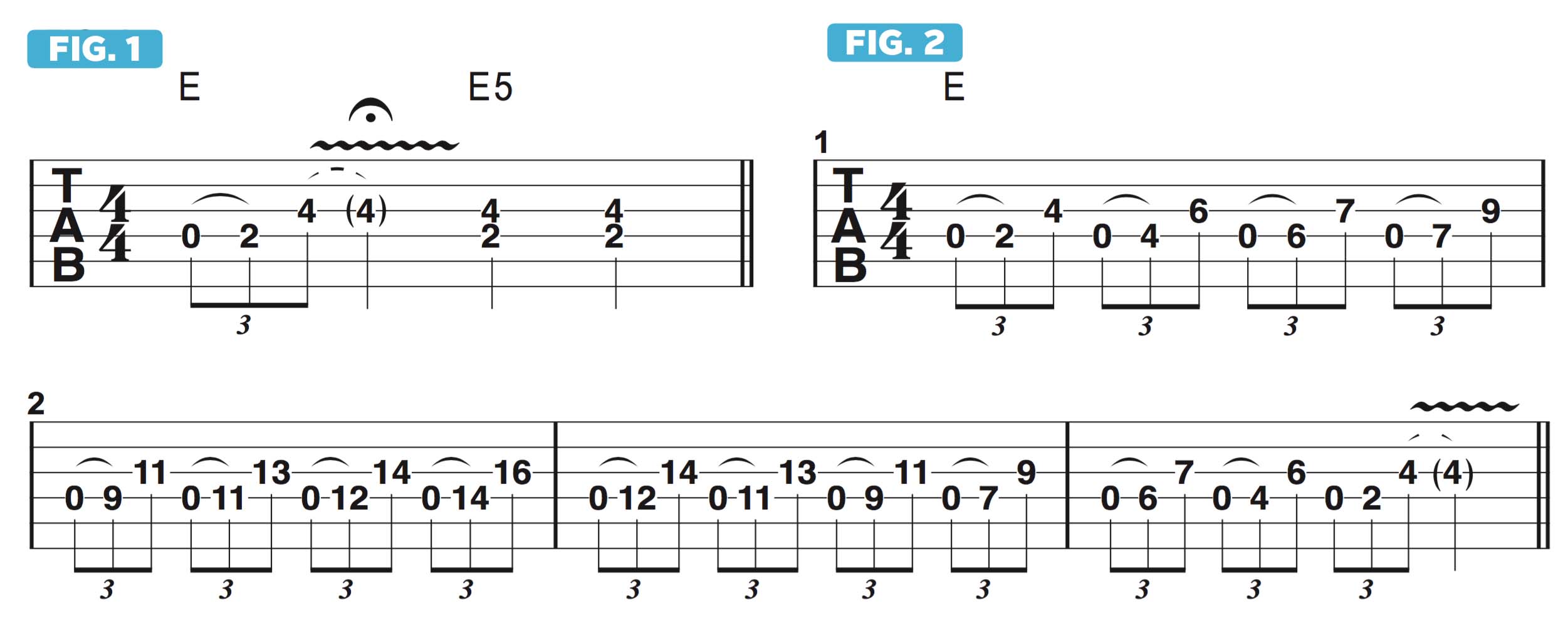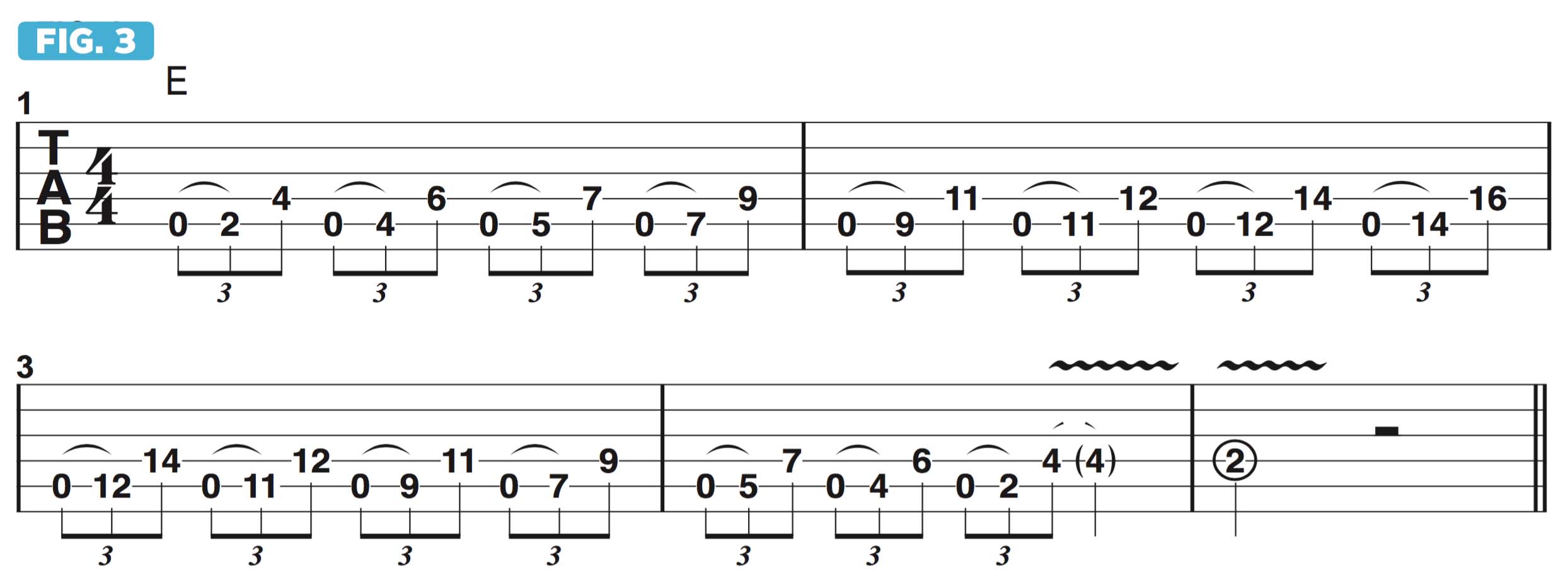Vinnie Moore shows you how combining 5th intervals with open strings can provide fresh phrasing ideas
The UFO guitarist takes a closer look at the E Mixolydian mode and finds new approaches for rhythm and lead playing

Previously, I've demonstrated a technique in which I hammer-on from an open string to play triplet-based patterns built around 6th intervals, or 6ths, for short.
The patterns I presented were all diatonic to (within the scale structure of) the A Mixolydian mode (A, B, C#, D, E, F#, G). As this seven-note set contains two “sharp” notes – C# and F# – it is made up of the same notes as the D major scale (D, E, F#, G, A, B, C#) but starting from and oriented around that scale’s 5th degree, A.
Another helpful way to think about Mixolydian is that it is the same as its parallel major scale, except the 7th degree is lowered, or “flatted,” by a half step, or one fret. For example, the A major scale is spelled A, B, C#, D, E, F#, G#. If we lower the 7th, note, or degree, G#, one half step, to G, we then have A Mixolydian.
For the examples in this column, I’d like to shift our focus to the key of E and the E Mixolydian mode, which is spelled E, F#, G#, A, B, C#, D.
As there are three sharp notes within this seven-note set, that means this series of notes is relative to the A major scale (A, B, C#, D, E, F#, G#), starting from its 5th degree, E. Instead of simply transposing our patterns based on 6ths from the key A to the key of E, we’re now going to also switch to using 5th intervals.
For example, if E is our root note, we can count five scales degrees up either the E major scale or the E Mixolydian mode – E, F#, G#, A, B – and find that B is the 5th of E. If you play the notes E and B together, a 5th interval is formed, which is the commonly used root-5th power chord.
Figure 1 illustrates a hammer-on from the open D string to E at the 2nd fret, followed by a B note on the G string’s 4th fret. Playing the notes E and B together sounds an E5 power chord.
All the latest guitar news, interviews, lessons, reviews, deals and more, direct to your inbox!
As we had done with 6ths in the previous lesson, let’s move these 5th shapes up the fretboard. As shown in Figure 2, I’m hammering-on from the open D string to successively higher notes of the E Mixolydian mode, with each D-string note followed by the note a 5th higher on the G string, while remaining diatonic to, or within the confines of, the E Mixolydian mode.
As you’ll see, all of the root-5th pairs here are two frets apart, with the exception of G# and D.
The “evil” tritone is quite fittingly heard with considerable frequency in heavy metal music, a prime example being the opening figure to the song Black Sabbath
These two notes form a tritone, which is two notes that are three whole steps apart, in either direction. The tritone was at one time infamously referred to by the medieval Catholic Church as diabolus in musica, or “the devil in music,” for its inherently “evil” sound.
The “evil” tritone is quite fittingly heard with considerable frequency in heavy metal music, a prime example being the opening figure to the song Black Sabbath. Getting back to our diatonic 5ths pattern, it can easily be moved over to any pair of adjacent strings, such as the A and D strings, as illustrated in Figure 3.
If you’re seeking an interesting twist to throw into the mix here, why not try switching from a rhythm of eighth-note triplets to straight 16th notes, and utilizing a double hammer-on from the open A string followed by a barred double-stop on the top two strings, as I demonstrate with two diffferent shapes in Figures 4 and 5?




